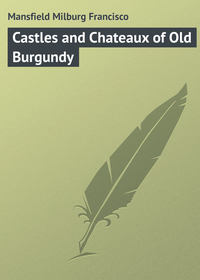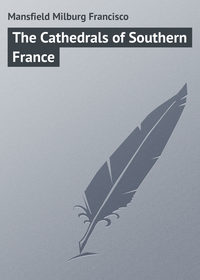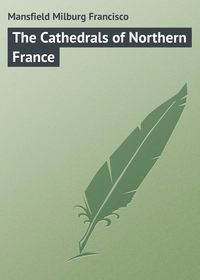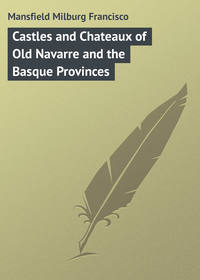 полная версия
полная версияRomantic Ireland. Volume 2/2
These few lines serve to give a most truthful word-picture of Galway Bay; and also a glimpse of the brilliancy with which Mr. O’Connor writes. Continuing, Mr. O’Connor writes of his school-days in Ireland thus, in words which give a far more sympathetic and clear knowledge of things as they are – or were – than most reminiscences of a like nature:
“There had come to my native town of Athlone a new school, and it was but natural that my father should like me to go there, and, accordingly, I had no more of Galway – except at vacation-time – for five long years.
“These years belong to my native town and the school near it; and they were among the most unhappy years of my life.
“I remember still the bitter flood of tears I wept the first day after I returned to Athlone from the year or so I had spent in Galway.
“But Galway had to me, then, many of the chief charms of boyhood. There was a second house behind that in which we lived, which was usually unoccupied. From its roof you could see one of those beautiful scenes that, once seen, haunt one ever afterward. Beyond the town you could catch sight of the sea; and there, on certain evenings, you saw the fleet of herring-boats as they went out for their night-watch and night harvest of fish, – a sight that was more like something of fairy-land than of reality, though I dare say the poor crews found much grimmer reality than romance in their hard and laborious night-watches.”
Just off the mouth of Galway Bay are the Aran Islands. Between them and the mainland the sea is often so rough as to make it impossible for small boats to undertake the crossing. The principal food of the inhabitants is dried fish, naturally a home product.
The chief patron saint of Munster, aside from St. Finbarr’s association with Cork, was St. Albeus. He had already been converted by certain Christianized Britons, and had travelled to Rome before the arrival of St. Patrick among the Irish. After his return, he became the disciple and fellow labourer of that great apostle, and was ordained by him as first Archbishop of Munster, with his see fixed at Emely, long since removed to Cashel.
He possessed, according to the chroniclers, the wonderful art of making men, not only Christians, but saints, and for this great ability King Engus bestowed upon him the isles of Aran in Connaught, where he founded a great monastery.
So famous did the island become for the sanctity of its people that it was long called “Aran of Saints.”
The rule which St. Albeus drew up for them is still extant in the old Irish manuscripts. Though zeal for the divine honour and charity for the souls of others fixed him in the world, he was always careful, by habitual recollection and frequent retreats, to nourish in his own soul the pure love of heavenly things, and to live always in a very familiar and intimate acquaintance with himself and in the daily habitual practice of the most perfect virtues. In his old age, it was his earnest desire to commit to others the care of his dear flock, that he might be allowed to prepare himself in the exercise of holy solitude for his great change. For this purpose, he begged that he might be suffered to retire to Thule, the remotest country toward the northern pole that was known to the ancients, which seems to have been Shetland, or, according to some, Iceland or some part of Greenland; but the king guarded the ports to prevent his flight, and the saint died amidst the labours of his charge in 525, according to the Ulster and Innisfallen annals.
These islands are three in number: Inishmore, Imishmaan, and Inisheer, and contain among them such a wealth of pagan and Christian antiquities as is excelled by no locality in Ireland of the same area: perhaps fifteen square miles in all.
There is a work published in Dublin, known as “The Illustrated Programme of the Society of Architects,” which contains a brief account of the wealth of the architectural and historical lore of these parts. More one could not wish to know unless he were profoundly interested, and less would not even satisfy him if he became at all enamoured of these islands, so full of dreary old places and quaint customs, to say nothing of the wealth of tradition and legend which hangs about it all.
Westward, the nearest land is America, where so many stalwart sons of Galway – and daughters, too – have migrated. Here the peasants still reverently believe in the far-famed land of Hy or O, – Brazil, the paradise of the ancient pagan Irish.
The praises of the “great fictitious island” were sung by the bards of olden time, and tradition has perpetuated its fame as a “land of perpetual sunshine, abounding in rivers, forests, mountains, and lakes. Castles and palaces arise on every side, and, as far as the eye can reach, it is covered with groves, bowers, and silent glades; its fields are ever green, with sleek cattle grazing upon them; its groves filled with myriads of birds. It is only seen occasionally, owing to the long enchantment, which will, they say, now soon be dissolved. The inhabitants seem always young, taking no heed of time, and lead lives of perfect happiness. In many respects this fabulous land resembles the Tirna-n’oge, the pagan Irish Elysium.”
Among the chief – and assuredly unique – reliques of these few square miles of terra firma are the ruins of the old fortified Castle of Ardkyne, in which are built the remains of the great church of St. Enna, chief of the Oriels, who, upon his conversion, abandoned his secular rule, and eventually settled (not later than A. D. 489) in Aran, which henceforth became Ara-na-noamh, “Aran of the Saints.” The church was one of several destroyed by the soldiers of Cromwell; but its plan, about twenty by ten feet, can be traced behind the village. Above the village is the stump of a round tower, and, on the ridge, the oratory of St. Benen, a unique specimen of early Irish church architecture, which has remarkably steep pitched gables. The window in the east wall has its head and splay of a single stone. The narrow north doorway has inclined jambs. If the name refers to the apostle of Connaught, St. Benen of Armagh, it must be a dedication, as he died in 468. The building may with confidence be assigned to the sixth century.
St. Edna’s burial-place, known as Tegloch Edna, is another curious premediæval church.
On the Aran Islands there are no bogs, but one has, instead, to dodge his footsteps in and out among pebbles and rolling stones of every size and shape. This is particularly so if one is to make the journey to Dun Ængus, one of the finest prehistoric forts of Western Europe; called, indeed, by Dr. Hindes Petrie, “The most magnificent barbaric monument now extant in Europe.”
It is, undoubtedly, the most noteworthy object in Aran. It consisted originally of a triple line of works, but the two inner lines, of horseshoe shape on the verge of a bold headland, are those best preserved. Tradition assigns it to Ængus, a Firbolg chief who lived about two thousand years ago. The chevaux-de-frise defending the second line is unmistakable, and the whole is as majestic in its grandeur as its supposed antiquity might indicate.
Temple MacDuagh, near Kilmurvy, is a “cyclopean” church of the seventh century, and Dun Oghil is a grand fort consisting of a circular cashel, within a second, which is roughly square.
These are the chief features of the great island, with the Temple Brecan, which has a chancel of rude ancient masonry, a choir which more nearly approaches our own time by four or five hundred years and is still modern, and a sacred enclosure devoted to the burial of saints, of which the Irish calendar seems quite full.
On Inisheer are the remains of an ancient place of worship dedicated to St. Cavan, brother to St. Kevin, the legend of whose life everywhere confronts one in County Wicklow. There is another to St. Gobnet, abbess of the sixth century.
CHAPTER VII
ACHILL TO SLIGO
IT has been suggested before now that the domain of Achill Island, off the coast of Mayo, that wonderland of natural unspoiled grandeur, be preserved as a sort of national park.
Its primitive beauties are impressively great without rising to splendour or magnificence.
Said Sir Harry Johnston, in writing to the London Times:
“Is it impossible that individuals and the State together should intervene before it is too late and save Achill Island as a national park, as a paradise in which the last aspects of the indigenous British fauna may be exhibited? This might be done without disturbing the indigenous population, who could still carry on their fishing industry and the amount of agriculture necessary to their subsistence, without interfering unduly with the wild birds and beasts of the island. There would be, of course, an absolute interdict against ‘sportsmen’ and gunners; it would no longer be permissible to shoot the seals that haunt the caves and rocks around Achill, while the deer, wild goats, foxes, eagles, ravens, swans, gulls, choughs, and other wild birds and beasts would be similarly protected. People would then visit Achill Island at all seasons of the year (the climate is remarkably mild in winter) for the pleasure and interest afforded by the contemplation of its wild fauna. We should, in short, have an object-lesson of what Ireland and most other parts of the British Isles were like under prehistoric conditions.”
From this it will be inferred that there is every encouragement for such a procedure, did the powers but take their rightful initiative.
Whether such an event, if it come to pass, would make for a greater admiration of this lone and sea-girt bit of terra firma, it remains for others than the writer of this book to prognosticate. Certainly, under any aspect except that of the erection of multitudinous “resort hotels” and “furnished bungalows,” Achill Island is a wonderful resort for those in need of soothing influences; and, for its natural and unspoiled charms alone, should be kept quite as it now is.
Achill is a veritable unknown wonderland. Not that it is actually unexplored, that it is vast, or that it is inaccessible. It is none of these; but few foreigners, or “aliens,” as the Irish prefer to think of strangers, have ever visited this little-known corner of Ireland, or even know where it is. Achill Island is the largest island on the Irish coast, in shape not unlike an irregular triangle, and contains an area of fifty-five square miles. To the north is the deeply indented Black Sod Bay, with its myriad smaller bays, while to the south is Clew Bay, populated with numerous tiny islets, and the high-held head of Croagh Patrick. Off to the northwest are the “Enchanted Isles,” the legendary homes of saints and recluses, among them Inishglora, Inishkeenah, and Inishkea.
On one of these it is fondly believed by the natives that Ossian resided. Tradition has preserved the record thus:
“Ossine MacFoin, seated on the banks of the Shannon, adoring the Author of Nature in the contemplation of his works, was suddenly hurried away to Tirna-n’oge (the country of youth, or island of immortals), which he describes with all the vivacity that fancy, aided by the sight of so lovely a country as Ireland, could assist the bard with. He remained here for some days he thought, and, on his return, was greatly surprised to find no vestige of his house or of his acquaintance. In vain did he seek after his father Fion, and his Fonne Eirion; in vain sounds the buabhal, or well-known military clarion, to collect those intrepid warriors. Long since had these heroes been cut off in battle; long had his father ceased to live! Instead of a gallant race of mortals which he had left behind, he found a puny and degenerate people, scarce speaking the same language. In a word, it appeared that, instead of two days, he had remained near two centuries in this mansion of the blessed.” (O’Halloran.)
Achill itself contains scarcely a tree worthy the dignity of the name; but heath, gorse, juniper, and coarse grasses abound.
Sleivemore has a height of 2,204 feet and Croghan 2,192. Both rise abruptly from the sea, after the manner of the castellated peaks in the fairy books, which, with their component castles, mostly do not exist out of books.
Kildavnet Castle on Achill Sound was one of the numerous retreats of Grace O’Malley. Its square keep still stands. The arm of the sea on which it was built was so deep that vessels rode at low water under the very walls of the castle. “Here,” tradition states, “the skull of Grace O’Malley was formerly preserved, and valued as a precious relic. One night, however, – so the legend goes, – the bones of the famous sea-queen were stolen from their resting-place, and conveyed, with those of thousands of her descendants, into Scotland, to be ground into fertilizer. The theft was of course perpetrated in secret, and in the night-time. If the crew had been seized by the peasantry, with their singular cargo, not a man of them would have lived to tell the tale, for the Irish regard with peculiar horror any desecration of the graveyard.”
According to a recent census, the population of Achill and Achill-beg, the baby islet off the southern limb of its parent, has decreased nearly ten per cent. in the space of ten years; from which fact it may be inferred that the popularity of this salubrious spot – for it ranks high among the world’s great natural sanatoria – is not increasing with the rapidity that might be expected.
The two villages of the larger island, Keel and Dooagh, seem populous enough, as is also the Protestant community of Dugort. The island, in general, is exceedingly unproductive, though the sea yields a wonderful harvest to the fisher folk.
There is but a narrow margin between the well-being and distress of the inhabitants, but signs are not wanting that whatever, in exceptional periods, may have been their condition, at present they are relatively better off than many of their compatriots in the west of Ireland. Considerable numbers annually migrate to the north of England and the south of Scotland for the harvest, just as, with the same motive, the “East-Enders” of London throng to the hop-fields of Kent, and the willing and industrious Bretons cross the Channel, in the autumn, to the hay-fields of England’s “home counties.”
Off the western Irish coast, from Connemara and Mayo, there are yet to be found remote islands with an exceedingly primitive civilization. Achill owes much of its interest to the fact that it exhibits a similar state of things, in many points little altered by contact with the mainland. The people, the cabins they inhabit, and their manner of life show very little change, in spite of the introduction of a good many articles of manufacture which a generation or two ago were quite unheard of. One thing which cannot fail to be noticed will be the queer little “public houses.” The tenement itself, however aboriginal, is sure to contain an assortment of strong drinks as varied as the average West End bar. The quality may be dubious, but there will be no question as to the strength and specific gravity of the spirit, particularly the eau-de-vie, or the “mountain dew.”
Of the charms of Dugort, the “Settlement,” and Dugort proper, the poet-laureate, in the pages of “Maga,” has written eulogistically. He says:
“A more perfect place of holiday resort it would not be possible to imagine. There are fine yellow sands, where children may make dykes, fortresses, and mountains of moderate height… There is fishing, either in smooth or rolling water, for those who love the indolent rocking or the rough rise and fall of the sea; precipitous and fretted cliffs, carved with the likeness of some time-eaten Gothic fane by the architectonic ocean; rides, drives, and walks amid the finest scenery of the kingdom. ‘I think she prefers Brighton,’ said a stranger to me of his companion; and, if one prefers Brighton, one knows where to go. But if nature, now majestically serene, now fierce and passionate, be more to you than bicyclettes and German bands, you can nowhere be better than at Achill.”
The Settlement, or modern Dugort, is a group of cabins above the shore, which owed its creation to the Rev. Edward Nangle, a clergyman of the Established Church. In 1831 he visited Achill, and was so impressed with what he deemed the “spiritual destitution” of the islanders that he organized a mission. Some seventy acres of land having been bought, two or three cottages were erected in 1833, and in the following year Mr. Nangle settled at what is now the bright little village of modern Dugort. Whatever opinion may be held as to the value or wisdom of his undertaking, Catholic and Protestant alike, now that the dust of the battle has settled, will agree that Mr. Nangle had in him the stuff that heroes are made of. His immediate oversight was withdrawn about 1852, though for the rest of his life he took an active share in promoting the continuance of his work. He died in 1883, in his eighty-fourth year, but long before that time the “mission” had ceased to be a cause of dispute, and now Dugort is merely a small Protestant preserve in a Catholic district.
Just south of Achill, in Clew Bay, is Clare Island, which has been likened to the pirate islands of the transformation scenes of the theatre. Certainly the description is a good one, as it is a spot typically suitable in shape and outline for hidden treasures, shipwrecks, and blood-letting galore. Its outline is bold and jagged, and it sits ensconced in a basin of blue water, which, in the twilight, is lit up by the western sun in a manner like nothing else so much as that of the theatre.
It was perhaps merely an odd fancy – though a likely enough one – that is responsible for the simile; but it is pertinent to remark that this tiny emerald, set in a sea of sapphire, was really one of the many haunts of Grace O’Malley, the famous chieftainess and warring amazon of the sixteenth century. Here she actually did live, hoarded her arms and munitions, concealed her treasures, and imprisoned her captives, hence it is with reason that the description lives to-day. One commends the perspicacity of Grace O’Malley, or Grania Uaile, as she is sometimes called, in having selected such a beautiful spot for her stronghold, sheltered on one side by the purple hills of Connemara, and on the other guarded by the open sea.
Next to the headlands of Kerry, Connemara is the westernmost part of Ireland. Its identity is now lost in that of County Galway, but it is still known to travellers as “wild Connemara.” Not that it is entirely unpeopled, or that there is any special hardship involved in traversing its area; the hotels are more numerous than ever, and it is an open question if the accommodation offered at Recess, Clifden, Westport, and many other of the purely tourist points is not the equal of any in Ireland. They have not the electric light in many instances, and often not water “laid on,” but the genuine traveller will not care for this if he can but be sure of his bed and board. To feel sure of the former, however, it will be necessary for him to bespeak it in advance if he travels here in the season.
In Connemara there is no great wealth of historical or archæological memorials. In fact, there is a scarcity of both, and one has to take his fill of the wild, natural beauties of the rock-bound coast scenery, the bracing atmosphere, and the wholly unspoiled charm of the place, which, in spite of the advent of the great hotels before mentioned, has not yet become travel-worn.
Lough Carib, which is possessed (at Oughterard) of a fine ruined castle, just north of Galway, is the largest of the score of purple, deep-looking lakes with which the western part of the county is dotted. The scenery of lake and sea, of bracken-clad hills and plains, and of great sombre, gloomy mountains makes up an ensemble of surpassing beauty. The centres of population are few, far between, and of minute dimensions.
The railway line from Galway ends at Clifden, a town so unimportant and quiet that, in itself, it does not warrant remark. It was founded in the reign of George IV., and this early foundation consisted of but a single house, though it is the gateway to the wonderful coast scenery of the region to the northward, not actually in Connemara, but what is known as “Joyce’s Country.”
Of all the landlocked bays of this region, none equals Killary Harbour, which is simply the elongated estuary of the tiny river Eriff.
The hamlet of Leenane is the metropolis of these parts, and is so very small and unimportant that it would hardly be remarked, except for the fact that no other of even the same rank lies within a radius of twenty miles. The situation of Leenane is charming, at the head of Great Killary. Around about are hills of mountainous pretentions, and before its doors is a fiord, as ample and as calm as many, of more fame, to be found in Norway. Seaward, the great hills come down to the water’s edge and almost join hands across the narrow mouth of the estuary, forming a sheltered and landlocked haven of so great a depth as to allow anchorage for even a great battle-ship.
Between Galway and Clifden is Recess, a point of vantage from which to visit much that is characteristic of the scenery of Connemara. Firstly, the region is of interest to the fisherman; secondly, the geologist; and, thirdly, to all lovers of nature, which, judging from the recent popularity of “nature books,” is perhaps much the largest class.
The chief topographical feature, which forms the background to Recess, is the mountain range of the “Twelve Bens,” a glorious group of dark-mantled mountains with stony peaks and flinty-quartz hearts.
One may tramp Connemara for weeks, and not know all its beauty-spots, or he may scamper around it by coach and rail in two days, and depart thinking he has seen it all; but in either case, his memory, if it be a good one, will sooner or later call him to task for his presumption. For this reason, it is manifestly presumptuous to attempt to give its proper rank to its great wealth of natural attractions among the various collections which Ireland possesses.
The scenery about Recess is a picturesque combination of lake and river and mountain; but, to the southward, there are wild and rugged bits of coast and red bracken-covered hills, which look to-day exactly as they did in times primeval.
Lough Glendalough, which lies immediately before Recess, is but the foreground of a lovely picture which it will take many days to dissect and fully appreciate.
There has ever been a dispute as to whether the glory of the “Twelve Bens” really belonged to Recess or Leenane. It certainly matters little, since they are a wonderfully impressive background viewed from either point.
It must be a well-booted and strong-limbed pedestrian who will essay the task of ascending these famous mountains. Benbaun is the monarch of the Bens, and is 2,395 feet in height. Not a very great altitude as Continental mountains go, but withal a very respectable eminence to climb.
North of Achill is Black Sod Bay, whose memory comes down to us through Kipling’s reminiscence in “A Fleet in Being.” More anciently, it was one of the harbours where a part of the ill-fated Armada was supposed to have gone ashore. There are no great centres of population here in the bleak northwest of County Mayo, and there are no architectural remains of note; but there is local colour, and much of it, for one who would study the poor Irish peasant on his native heath.
Until one rounds the headland of Benwee, and passes the “Stags of Broadhaven,” – a head of deep-water pinnacles of rock whose jagged outlines have been likened to a stag’s antlers, – and reaches Killala Bay, there is naught of twentieth-century civilization to remind one he is not living in other days, or certainly in other lands and among other associations than those which city folk have come to consider necessaries.
Killala Bay is flanked on the west by Downpatrick Head, which rises two thousand feet sheer above the sea-level. It is one of Ireland’s true wonders, but attracts few visitors save migratory sea-fowl.
Killala itself, one learns from the “Life of St. Patrick,” is a place of great age. The holy man himself —
“Came to a pleasant place where the river Muadas (Moy) empties itself into the ocean; and on the south banks of said river he built a noble church called Kill Aladh, of which he made one of his disciples, Muredach, the first bishop.”











